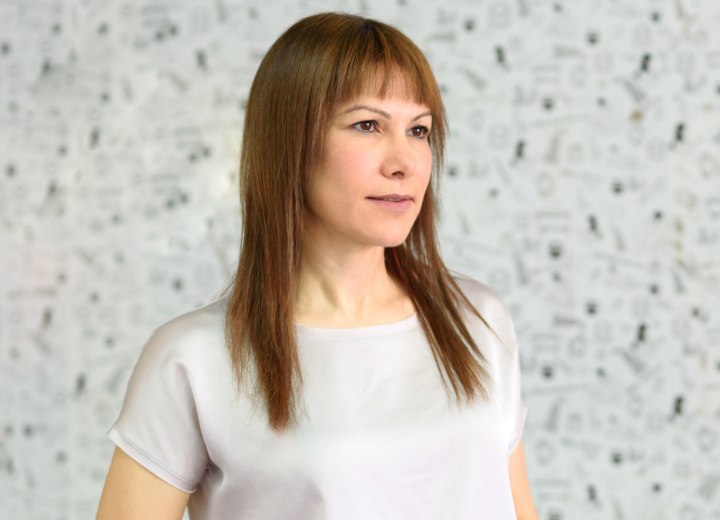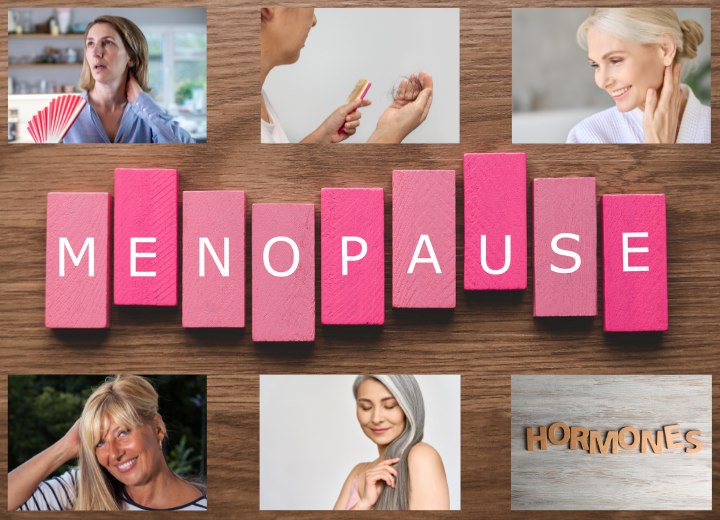Hair and the Aging Woman

For many women, knowing what to expect can ease the stress of experiencing the changes of aging. In addition, there are ways to cope with these hair changes that can reduce some of the stress associated with growing older. Let us address some of the common issues and discuss possible causes and options for each.
When it comes to growing older, one of the more frightening changes women begin to notice is the thinning of their hair. Hair loss is, for most women, a more traumatic prospect than going gray. However, the majority of women will experience some level of hair loss as they get older. In most cases, the loss will be minor, but some women may find that they can easily see their scalps through their hair, particularly at the perimeter areas.
One common cause of hair loss is low thyroid function, which is common in women experiencing menopause. However, fluctuations in hormone levels during menopause, as well as emotional and physical stress that many women experience as they age, can cause some hair loss. In addition, as we age, the growth rate of the hair slows down, meaning that when hairs are shed, they are replaced more slowly.
If you feel that your hair loss is unusual, you should speak to your doctor about it. They will be able to determine whether your problem is the result of thyroid conditions or if you might benefit from Hormone Replacement Therapy. You may also want to pursue homeopathic treatments using soy products, which have been shown to help with hormone levels in menopausal women without the use of sometimes risky synthetic hormones.
Furthermore, if your hair is significantly thinner than it was when you determined your "best look", you may want to talk to your hairdresser to find a new hairstyle that is more flattering for you now that your hair's density has changed. For most women with thinning hair, a shorter, layered haircut is much more flattering and is easier to style. You may want to learn techniques of styling to add fullness to the hair as well. Adding curl and root-lift products can make a world of difference.

The loss of density affects everything from blow-drying, using less heat and a wide-toothed brush to gently direct the hair, to curling irons, flat irons, and hot rollers, all of which should be used on much lower heat settings to prevent overheating the hair.
Loss of Condition/Changes in Texture
After a certain age, many women notice that their hair becomes drier, and the texture seems coarser and more brittle than before. This is in part because the body's production of sebum, a naturally-created lubricant of the skin and hair, slows down. The hair may become more porous and lose its elasticity as a result. It is estimated that sebum production decreases by 10% for every decade we live.
Dealing with this problem is relatively easy. To start, look inward by evaluating your eating habits. Make sure you are getting a healthy diet, rich in antioxidants, and focus on foods high in calcium, vitamins A, E, and C, as well as omega-3 fatty acids. You should also make sure to drink at least 64 ounces of water per day.
This, in addition to using a gentle shampoo and a moisture-rich conditioner, will make your hair more manageable and help you keep it healthy both inside and out.
Because your hair changes condition as you age, if you have always colored and permed your hair, you may want to consider dropping one of those processes. These chemical services can become increasingly hard on the hair as we age. For most women, the choice will be to sacrifice perms in favor of color. On a positive note, natural styling with a good cut and simple, soft color is much more youthful than the heavily styled looks inherent in most perm styles.
You also need to look carefully at your styling products. Avoid products containing alcohol and those that are prone to creating build-up on the hair. Soft styling is much preferred over the stiff, structured looks of our younger days, and alcohol-free products don't dry out the hair the way those with alcohol do.
©Hairfinder.com
See also:
Changes in hair when we age
Over 40 hair and hairstyles
Choosing a hairstyle for the mature woman
